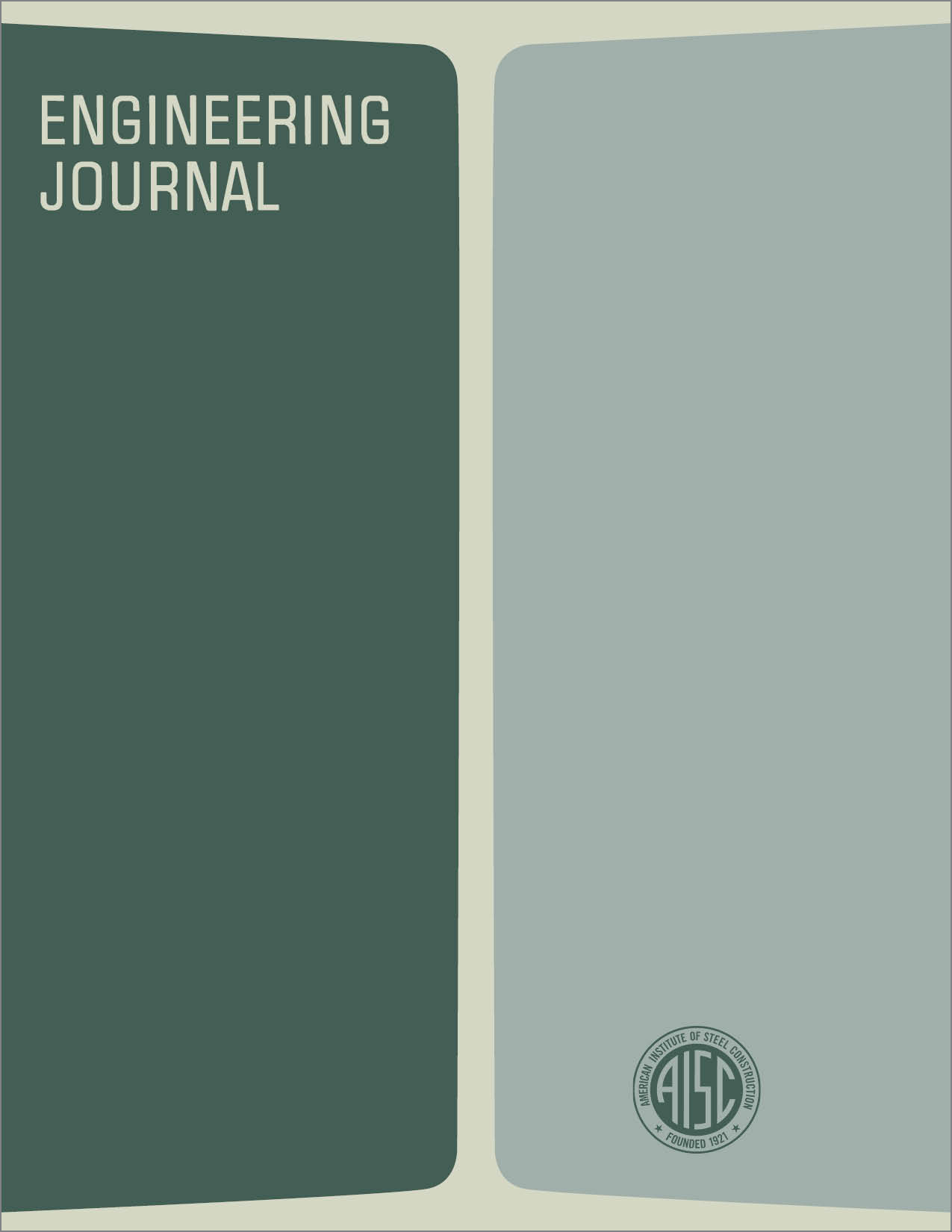The Behavior of A514 Steel Tension Members
DOI:
https://doi.org/10.62913/engj.v8i1.158Abstract
Recent studies into the behavior of bolted joints of high strength steels have pointed out the importance of the net-to-gross cross-sectional ratio upon the deformation behavior of such members. In particular, these studies show that because of the low ratio of ultimate vs. yield strength levels, usual detailing practice commonly will lead to the situation wherein the member will fail through the net section of the joint before yield is reached in the gross section. It is hypothesized that in this situation, wherein the main portion of the member is still elastic, fracture will occur before any significant amount of ductility is exhibited. Although tension members are commonly designed on an elastic basis, it is nevertheless considered desirable that as this level is exceeded and the structure proceeds towards its ultimate load, capacity for distortion should still exist in the member.4 In materials such as aluminum, where it is recognized that this capacity cannot be attained, a rather higher factor of safety is demanded. Although there is no reason to question the above hypothesis, all the reported tests on A514 steel tension members have been primarily concerned with joint behavior and not with the overall behavior of a member which contains a joint. Accordingly, a series of tests has now been carried out on members of A514 steel, each of which contains a joint. The ratio of net-to-gross cross-sectional area is the principal variable, and the tests show the effect of this ratio upon member ductility. As an important preliminary to these tests, a considerable number of carefully controlled tension coupon tests on A514 steel were performed and these are also reported.

